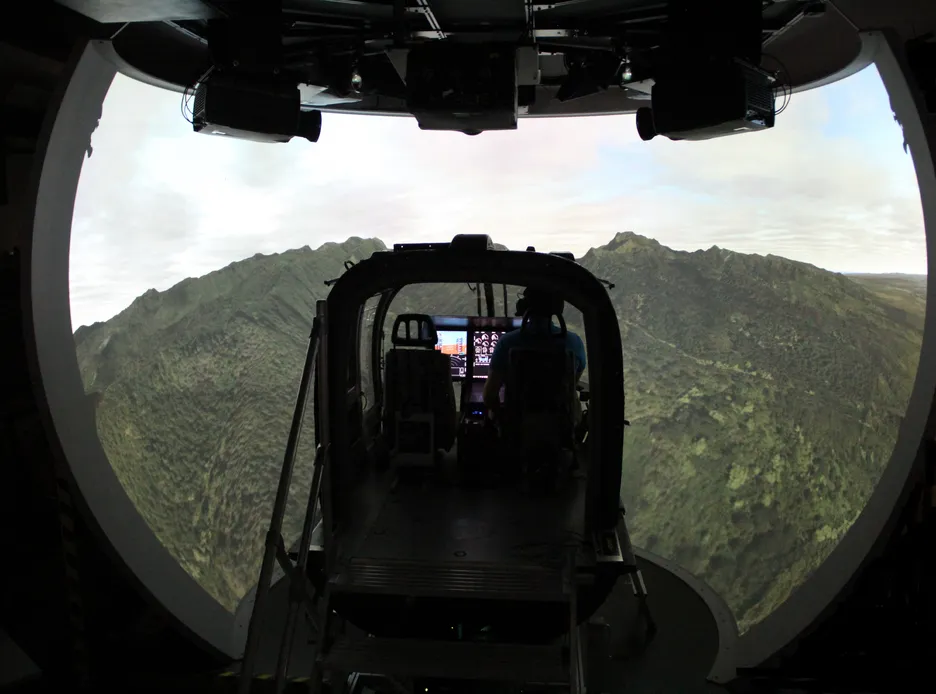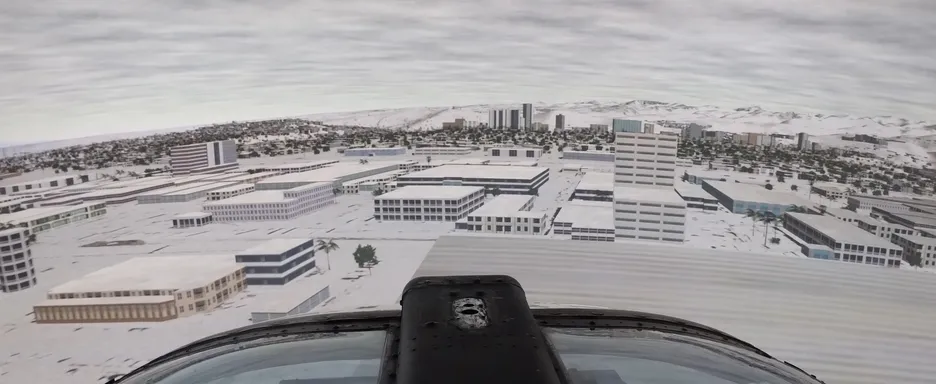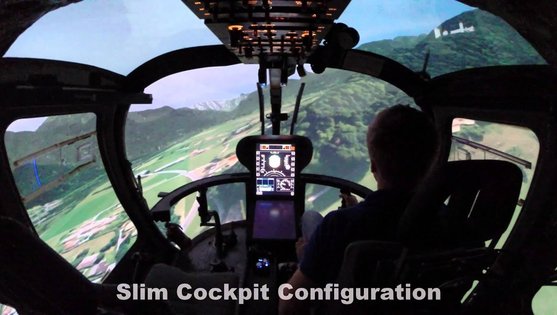In 2013, the ROSIE (Rotrocraft Simulation Environment) research simulator was put into operation at the Chair of Helicopter Technology. This is used in particular to develop and test the human-machine interface of the aircraft of the future. It is also used to test flight attitude controllers and flight physics models with real pilots.
In 2020, the visual system was converted to ensure the future-proof operation of the simulator.
The entire simulation software and hardware architecture were then updated in 2023. As part of this, a modular simulation system was implemented, which enables modular adaptation of the simulator's various subsystems.
The research simulator is equipped with a 6-channel visualization system, which generates an approx. 180° horizontal and -50°/+30° vertical field of view on a spherical screen. The 4K-capable projectors enable a razor-sharp overall image without recognizable transitions between the projector images thanks to auto-alignment. Each projector is supplied with image material by its own image generator PC to achieve optimum performance. This makes it possible for the aircraft crew in the cockpit to fully immerse themselves in the simulation.

A modular system concept is crucial for the simulator's research applications. This is the only way to simulate different helicopters and to quickly exchange hardware or software components between different flight test campaigns.
Within the architecture, the "SimHost" and the "Flightmodel PC" are the core elements of the simulator. The former is responsible for the entire data management and timing, while the latter calculates the flight physics of the helicopter. A human machine interface computer is installed in the cockpit, which digitizes the crew's inputs and emulates the avionics system. Communication between the individual computers works via a network protocol.


